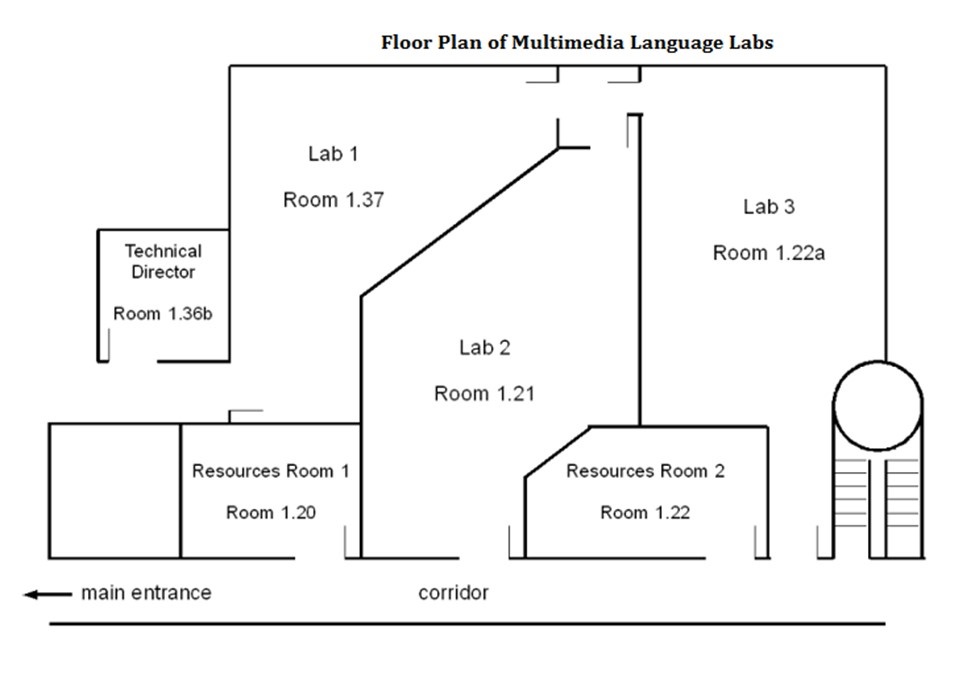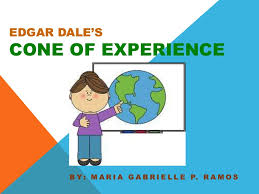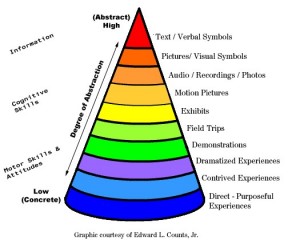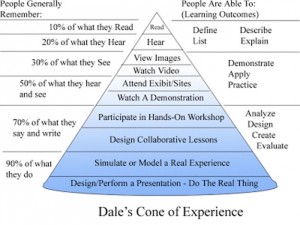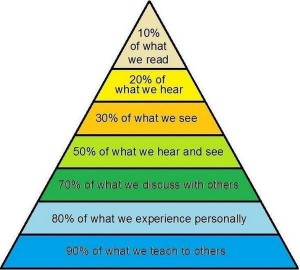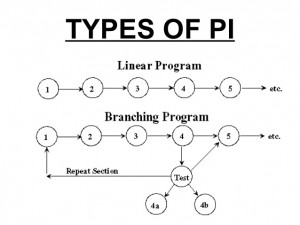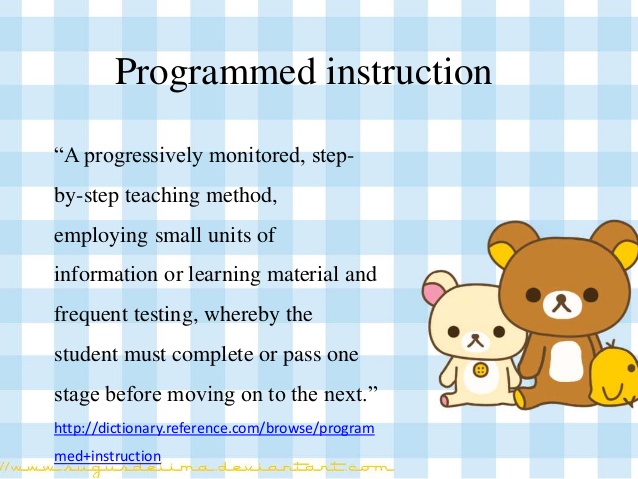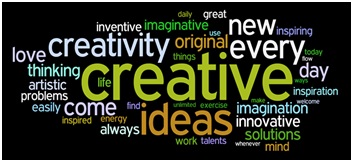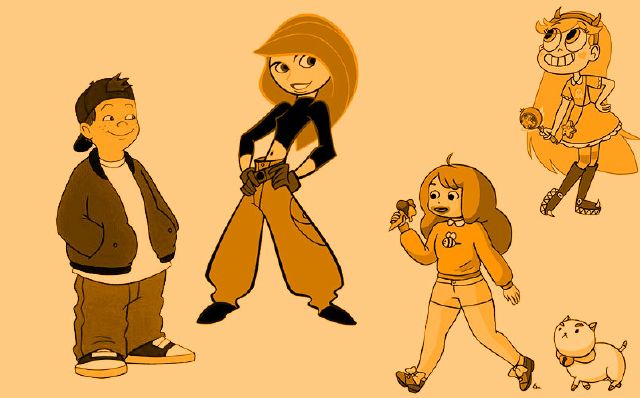Dr. V.K.Maheshwari, M.A (Socio, Phil) B.Sc. M. Ed, Ph.D.
Former Principal, K.L.D.A.V. (P.G) College, Roorkee, India
Open Educational Resources (OER) are teaching and learning materialsthat are freely available online for everyone to use, whether you are an instructor, student or self-learner. Examples of OER include: full courses, course modules, syllabi, lectures, homework assignments, quizzes, lab and classroom activities, pedagogical materials, games, simulations, and many more resources contained in digital media collections from around the world.
The term Open Educational Resources (OER) was first introduced at a conference hosted by UNESCO in 2000 and was promoted in the context of providing free access to educational resources on a global scale.
The Open Movement
A range of ‘Open’ philosophies and models have emerged during the 20th Century as a result of several different drivers and motivations – including sharing freely, preventing duplication, avoiding restrictive (Copyright) practices, promoting economic efficiencies and improving access to wide groups of stakeholders. Many of these have been driven by and created by communities that recognise the benefits to themselves, and sometimes to wider groups. Some of these are listed below:
• Open source (relating to business and technology)
• Open source software
• Open source hardware
• Open standards
• Open access (research)
• Open design
• Open knowledge
• Open data
• Open content
• Open courseware
• Open educational resources
• Open educational practice
Several of these ‘movements’ or ‘philosophies’ have been significant within the education community both in terms of research and learning & teaching (particularly educational technology), it is widely expected that sharing and openness would bring benefits to some stakeholders in the educational community.
Whilst the terms ‘Open content’ are sometimes used to mean the wide range of resources to support learning and teaching. We have chosen to use the term Open Educational Resources (OER) as this relates to resources that are specifically licensed to be used and re-used in an educational context.
“At the heart of the open educational resources movement is the simple and powerful idea that the world’s knowledge is a public good and that technology in general and the World Wide Web in particular provide an extraordinary opportunity for everyone to share, use, and reuse that knowledge” (Smith & Casserly, 2006, p. 10).
Rather than try to define the entire term open educational resources, some researchers split the term up in order to define its components separately. Hylén (2006) problematizes each of the three concepts in the name, questioning what is meant by “open,” “educational,” and “resources,” as do Mulder (2007) and OECD (2007).
Wiley (2010) assumes common understanding of the term educational resources, and argues that open is a matter of (1) cost and (2) copyright licensing and related permissions. For Wiley, open means that a resource is available free of cost and that four permissions (called the “4Rs”) are also made available free of cost. These permissions include:
Reuse: the right to reuse the content in its unaltered/verbatim form (e.g., make a backup copy of the content)
Revise: the right to adapt, adjust, modify, or alter the content itself (e.g., translate the content into an- other language)
Remix: the right to combine the original or revised content with other content to create something new (e.g., incorporate the content into a mashup)
Redistribute: the right to share copies of the original content, the revisions, or the remixes with others (e.g., give a copy of the content to a friend)
Wenk (2010) repeats the definition put forth by Freedom. Defined openness:
- The freedom to use the work and enjoy the benefits of using it.
- The freedom to study the work and to apply knowledge acquired from it.
- The freedom to make and redistribute copies, in whole or in part, of the information or expression.
- The freedom to make changes and improvements, and to distribute derivative works .
Tuomi (2006) takes another approach to defining openness, though one still focused on permissions. Tuomi describes OER as “sources of services” that:
(a) Provide non-discriminatory access to information and knowledge about the resource
(b) The services of which can be enjoyed by anyone with sufficient non-discriminatory capabilities .
(c) Can be contributed.
The following definition of OER has been proposed by the William and Flora Hewlett Foundation: OER are teaching, learning, and research resources that reside in the public domain or have been released under an intellectual property license that permits their free use or re-purposing by others. Open educational resources include full courses, course materials, modules, textbooks, streaming videos, tests, software, and any other tools, materials, or techniques used to support access to knowledge.
Open educational resources O.E.R are teaching, learning, and research resources that reside in the public domain or creative common area and are freely available to anyone over the Web. They are an important element of an infrastructure for learning and range from podcasts to digital libraries to textbooks and games.
Thus open educational resources (OER) are teaching, learning, and research resources that reside in the public domain or have been released under a copyright license that permits anyone to freely use and repurpose them. Open educational resources include full courses, course materials, modules, textbooks, streaming videos, tests, journal articles, and any other tools or materials used to support learning.
Open educational resources (OER) are any resources available at little or no cost that can be used for teaching, learning, or research. The term can include textbooks, course readings, and other learning content; simulations, games, and other learning applications; syllabi, quizzes, and assessment tools; and virtually any other material that can be used for educational purposes. OER typically refers to electronic resources, including those in multimedia formats, and such materials are generally released under a Creative Commons or similar license that supports open or nearly open use of the content. OER can originate from colleges and universities, libraries, archival organizations, government agencies, commercial organizations such as publishers, or faculty or other individuals who develop educational resources they are willing to share.
The Open Educational Resources (OER)
In its simplest form, the concept of Open Educational Resources (OER) describes any educational resources (including curriculum maps, course materials, textbooks, streaming videos, multimedia applications, podcasts, and any other materials that have been designed for use in teaching and learning) that are openly available for use by educators and students, without an accompanying need to pay royalties or license fees.
OER has emerged as a concept with great potential to support educational transformation. While its educational value lies in the idea of using resources as an integral method of communication of curriculum in educational courses, its transformative power lies in the ease with which such resources, when digitized, can be shared via the Internet.
Importantly, there is only one key differentiator between an OER and any other educational resource: its license. Thus, an OER is simply an educational resource that incorporates a license that facilitates reuse, and potentially adaptation, without first requesting permission from the copyright holder.
Difference between OER and open access publishing
Open access publishing is an important concept, which is clearly related to – but distinct from – that of OER.
Wikipedia notes that the term ‘open access’ is applied to many concepts, but usually refers either to:
• ‘Open access (publishing)’; or
• ‘Access to material (mainly scholarly publications) via the Internet in such a way that the material is free for all to read, and to use (or reuse) to various extents’; or
• ‘Open access journal, journals that give open access to all .
Open access publishing is typically referring to research publications of some kind released under an open license. OER refers to teaching and learning materials released under such a licence. Clearly, especially in higher education, there is an overlap, as research publications typically form an important part of the overall set of materials that students need to access to complete their studies successfully, particularly at postgraduate level.
Nevertheless, the distinction seems worth applying because it allows more nuanced discussion and planning about which kinds of open licences would be most appropriate for different types of resources.
OER verses e-learning
OER is not synonymous with online learning or e-learning, although many educaters make the mistake of using the terms interchangeably.
Openly licensed content can be produced in any medium: paper-based text, video, audio or computer-based multimedia. A lot of e-learning courses may harness OER, but this does not mean that OER are necessarily e-learning. Indeed, many open resources being produced currently – while shareable in a digital format – are also printable. Given the bandwidth and connectivity challenges common in some developing countries, it would be expected that a high percentage of resources of relevance to higher education in such countries are shared as printable resources, rather than being designed for use in e-learning.
OER verses open learning/open education
Although use of OER can support open learning/open education, the two are not the same. Making ‘open education’ or ‘open learning’ a priority has significantly bigger implications than only committing to releasing resources as open or using OER in educational programmes. It requires systematic analysis of assessment and accreditation systems, student support, curriculum frameworks, mechanisms to recognize prior learning, and so on, in order to determine the extent to which they enhance or impede openness.
Open learning is an approach to education that seeks to remove all unnecessary barriers to learning, while aiming to provide students with a reasonable chance of success in an education and training system centred on their specific needs and located in multiple arenas of learning.
While effective use of OER might give practical expression to some similarities, the two terms are distinct in both scope and meaning.
OER and concept of resource based learning
The resource-based learning mean, in essence is moving away from the traditional notion of the ‘talking teacher’ to communicate curriculum; a significant but varying proportion of communication between students and educators is not face to face but rather takes place through the use of different media as necessary.
The use of resource-based learning does not of course imply any intrinsic improvements in quality of learning experience. The extent to which shifting the communication of curriculum to instructionally designed resources leads improves the quality of education depends entirely on the quality of the resources developed.
To summarize:
• There is no direct relationship between OER and resource-based learning.
• Many OER available online have not explicitly been designed as part of a deliberate strategy to shift to resource-based learning.
• Likewise, most practice in resource-based learning currently uses fully copyrighted materials rather than OER.
Nevertheless, linking OER and resource-based learning provides an opportunity to leverage both most effectively.
Benefits of sharing content under an open license:
A key concern for educators and senior managers of educational institutions about the concept of OER relates to ‘giving away’ intellectual property, with potential loss of commercial gain that might come from it. This is often combined with a related anxiety that others will take unfair advantage of their intellectual property, benefitting by selling it, plagiarizing it (i.e. passing it off as their own work), or otherwise exploiting it. These concerns are completely understandable.
While a small percentage of teaching and learning materials can – and will continue to – generate revenue through direct sales, the reality has always been that the percentage of teaching and learning materials that have commercial resale value is minimal; it is also declining further as more and more educational material is made freely accessible on the Internet. Much of the content that was previously saleable will lose its economic value while the niches for sale of generic educational content will likely become more specialized.
Given this, it is important for copyright holders of educational materials to consider carefully what commercial benefits they might find in sharing their materials openly. Of course, the primary benefits of harnessing OER should be educational (see ‘How can education benefit by harnessing OER?’ below), but the issue of sharing content openly may also be considered a strategy to protect oneself commercially.
The following benefits can accrue from sharing content under an open license:
- As digitized content can so easily be shared between students and institutions, sharing it publicly under an open license is the safest way to protect the author’s IPR and copyright; the license can ensure that, when content is shared, it remains attributed to the original author. Open sharing of content can more rapidly expose plagiarism, by making the original materials easy to access. In addition, releasing materials under an open license also reduces the incentive for others to lie about the source of materials because they have permission to use them.
- For individual educators, proper commercial incentives for sharing content openly are most likely to flow when institutions have policies to reward such activity properly.
- Guiding students effectively through educational resources (via well-designed teaching and learning pathways);
- Offering effective student support (such as practical sessions, tutorials, individual counselling sessions or online); and
- Open licenses maximize the likelihood of content-sharing taking place in a transparent way that protects the moral rights of content authors. Furthermore, people who seek to ring-fence, protect, and hide their educational content and research will likely place limits on their educational careers.
- Providing intelligent assessment and critical feedback to students on their performance (ultimately leading to some form of accreditation).
- Sharing of materials provides institutions opportunities to market their services. Educational institutions that succeed economically in an environment where content has been digitized and is increasingly easy to access online are likely to do so because they understand that their real potential educational value lies not in content itself, but in offering related services valued by their students. These might include:
- They will also increasingly be excluded from opportunities to improve their teaching practice and domain-specific knowledge by sharing and collaborating with growing networks of educators around the world. Those who share materials openly already have significant opportunities to build their individual reputations through these online vehicles .
- Within this environment, the more other institutions make use of their materials, the more this will serve to market the originating institution’s services and thereby attract new students.
Education benefit by harnessing OER
The most important reason for harnessing OER is that openly licensed educational materials have tremendous potential to contribute to improving the quality and effectiveness of education. The challenges of growing access, combined with the ongoing roll out of ICT infrastructure into educational institutions, indicates that it is becoming increasingly important for them to support, in a planned and deliberate manner, the development and improvement of curricula, ongoing programme and course design, planning of contact sessions with students, development of quality teaching and learning materials, and design of effective assessment – activities all aimed at improving the teaching and learning environment while managing the cost of this through increased use of resource based learning.
Given this, the trans formative educational potential of OER revolves around three linked possibilities:
1. The principle of allowing adaptation of materials provides one mechanism amongst many for constructing roles for students as active participants in educational processes, who learn best by doing and creating, not by passively reading and absorbing. Content licences that encourage activity and creation by students through re-use and adaptation of that content can make a significant contribution to creating more effective learning environments.
2. Increased availability of high quality, relevant learning materials can contribute to more productive students and educators. Because OER removes restrictions around copying resources, it can reduce the cost of accessing educational materials. In many systems, royalty payments for text books and other educational materials constitute a significant proportion of the overall cost, while processes of procuring permission to use copyrighted material can also be very time-consuming and expensive.
3. OER has potential to build capacity by providing institutions and educators access, at low or no cost, to the means of production to develop their competence in producing educational materials and carrying out the necessary instructional design to integrate such materials into high quality programmes of learning.
Deliberate openness thus acknowledges that:
• Investment in designing effective educational environments is critically important to good education.
• A key to productive systems is to build on common intellectual capital, rather than duplicating similar efforts.
• All things being equal, collaboration will improve quality.
• As education is a contextualized practice, it is important to make it easy to adapt materials imported from different settings where this is required, and this should be encouraged rather than restricted
Principles of OER use
It incorporates several key principles:
•Principle of learning opportunity: Learning opportunity should be lifelong and should encompass both education and training;
• Principle of independent and critical thinking: The learning process should encourage independent and critical thinking. It should be Lerner centered
•Principle of flexibility: Learning provision should be flexible so that learners can increasingly choose, where, when, what and how they learn, as well as the pace at which they will learn;
•Principle of prior learning: Prior learning, prior experience and demonstrated competencies should be recognized so that learners are not unnecessarily barred from educational opportunities by lack of appropriate qualifications;
•Principle of credit accumulation: Learners should be able to accumulate credits from different learning contexts;
•Principle of appropriate conditions: Providers should create the conditions for a fair chance of learner success.
Types of educational resources?
Whilst purely informational content has a significant role in learning and teaching, it is helpful to consider learning resources by their levels of granularity and to focus on the degree to which information content is embedded within a learning activity:
• Digital assets – normally a single file (e.g. an image, video or audio clip), sometimes called a ‘raw media asset’;
• Information objects – a structured aggregation of digital assets, designed purely to present information;
• Learning objects – an aggregation of one or more digital assets which represents an educationally meaningful stand-alone unit;
• Learning activities – tasks involving interactions with information to attain a specific learning outcome;
• Learning design – structured sequences of information and activities to promote learning.
Contents in OER
OER can be separated, by content type, into four groups:
1. Text led,
2. Video led,
3. Animation led and
4. Multiple media.
OER may be freely and openly available static resources, dynamic resources which change over time in the course of having knowledge seekers interacting with and updating them, or a course or module with a combination of these resources.
Types of open educational resources include:
course materials,
full courses,
learning objects,
materials, or techniques used to support access to knowledge.
modules,
open textbooks,
openly licensed (often streamed) videos,
software, and other tools,
tests,
Effective use of OER
In most instances, a user has enormous latitude to adapt OER to suit contextual needs where the licence allows adaptation.
The vast majority of published OER welcome users to adapt the original resource. Common ways in which OER can be changed include the following:
• Mixing: A number of OER are mixed together and additional content is added to create an altogether new resource. This is common when course designers need to develop materials and resources to match a local curriculum or programme. A common concern is that it is rare to find existing OER that fit perfectly ‘as is’.
• Adaption: This occurs when one OER is used and multiple adaptations are developed to suit multiple contexts. It could be that the language is translated into others but usually adaptation requires local case studies/ examples to be added to make the materials relevant to students in a particular context.
• Asset extraction: It is also possible to extract only some of the assets of a resource or course and use them in a completely different context. This is especially true of media elements such as photos, illustrations, and graphs, as developers often lack the skills or resources to develop their own versions of commonly used visual aids. In many ways, the fact that changes may be made to the original is what makes OER – compared with other forms of copyrighted materials – especially useful to programme developers.
Skills Requirements for Open Educational Resources
Below is a list of the core skills that institutions will need to develop in order to make most effective use of Open Educational Resources:
Expertise in managing networks/consortia of people and institutions to work cooperatively on various teaching and learning improvement projects (including an ability to adapt to challenging environments – for example, power outages, physical discomfort, difficult personalities, institutional politics – and remain focused on the task at hand).
Monitoring and evaluation expertise to design and conduct formative evaluation processes, as well as longer-term summative evaluation and/or impact assessment activities that determine the extent to which use of open licensing has led to improvements in quality of teaching and learning, greater productivity, enhanced cost-effectiveness, and so on.
Expertise in curating and sharing OER effectively. This includes:
- Ability to generate relevant and meaningful meta-data for OER;
- Communication and research skills to be able to share information about OER, in the form of web updates, newsletters, brochures, case studies, research reports, and so on. This will include the full spectrum of skills required for such communication activities, from researching and documenting best practices, core concepts to graphic design and layout expertise.
- Knowledge of and the skills to deploy standardized global taxonomies for describing resources in different disciplines and domains;
- Technical skills to develop and maintain web platforms to host OER online, as well as to share the content and meta-data with other web platforms;
- Website design and management skills to create online environments in which content can be easily discovered and downloaded.
Modification of OER for some specific purpose
In most instances, a user has enormous latitude to adapt OER to suit contextual needs where the licence allows adaptation. If, however, the license restricts adaptation (as, for example, the Creative Commons license with a ‘No Derivatives’ restriction does), others may not alter the resource in any way. It has to be used ‘as is’. This right is not reserved often in OER.
The vast majority of published OER welcome users to adapt the original resource.
Common ways in which OER can be changed include the following:
• Mixing: A number of OER are mixed together and additional content is added to create an altogether new resource. This is common when course designers need to develop materials and resources to match a local curriculum or programme. A common concern is that it is rare to find existing OER that fit perfectly ‘as is’.
• Adaption: This occurs when one OER is used and multiple adaptations are developed to suit multiple contexts. It could be that the language is translated into others but usually adaptation requires local case studies/examples to be added to make the materials relevant to students in a particular context.
• Asset extraction: It is also possible to extract only some of the assets of a resource or course and use them in a completely different context. This is especially true of media elements such as photos, illustrations, and graphs, as developers often lack the skills or resources to develop their own versions of commonly used visual aids.
In many ways, the fact that changes may be made to the original is what makes OER – compared with other forms of copyrighted materials – especially useful to programme developers.
Conclusion
Online communities have demonstrated the now indisputable power and value of lots of people working collaboratively towards a common cause. And doing this in education has the potential to re-focus educational systems, restoring the core values of building and sharing knowledge that underpin good education, and systematically encouraging us to work with and learn from one another.
OER encapsulates a potential vision for educational systems globally wherein individual educators, and then increasingly entire departments and institutions, come together in common online spaces to start sharing the materials they have produced, in an effort ultimately to ensure that all the material which students need to complete their studies successfully can be accessed – legally – without any costs of licensing. There are vast quantities of such material already available across the world, from which no-one is generating any meaningful commercial return – and many more being produced every week. These represent a common intellectual capital that should be unlocked to drive and support education rather than being kept locked away.
The potential of OER includes bringing transparency to educational processes, facilitating collaborations between educators and students at different institutions, and establishing a new economic model for procuring and publishing learning materials. Ultimately, a key to its success will be to demonstrate that, in the medium to long term, OER will help over-stretched educators to manage their work more effectively, rather than adding new work requirements to their job description.
However, successful OER initiatives will be those that can work immediately and add educational value within the existing ICT infrastructure constraints of any participating institutions . Proving the potential of a concept that will only have an impact when these infrastructural constraints are removed is of little value to higher educational institutions in the short to medium term.
Thus, the value of OER projects and initiatives should be measured, in practical terms, against the extent to which they advance core educational objectives; and the principles of operation that govern OER communities should be driven by this imperative. Education is a social investment, and should be protected as such if it is truly to fulfil its potential in creating a more equal world. This makes it critical to find practical ways to build business models that will ensure the success of the online educational commons. Critically, we would do well to accept that – until this new model is established – it is likely that we will need to retain open minds and a spirit of compromise in engaging the interests of different parties seeking to open access to educational content.
At its most effective, creating and sharing OER is essentially about working together towards a common cause, whether this be within a single faculty or across a global network. Sharing materials that others can adapt and use recognizes the value inherent in team work and the improvements in thinking that will emerge from such collaboration. Doing this openly, using the already proven innovations of the Internet to facilitate sharing of content, presents a practical way to use cooperation to find simple solutions to pressing problems we face in education.
If educators start doing this in large numbers, the values of the systems for which they work will catch up, as all systems ultimately are simply a codification of how people have agreed to work and interact with one another. Consequently, rewards and incentives will shift to reflect appreciation for sharing and communal building at the expense of individualism and unhealthy competition. Conversely, if we wait for systemic policies to change before we start collaborating, then we have only ourselves to blame if the system’s values are never shifted.

